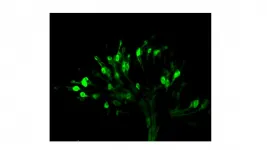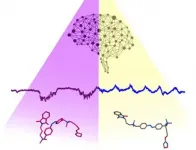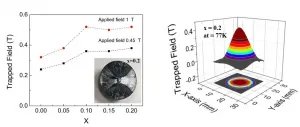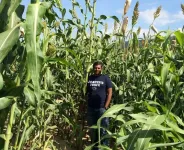INFORMATION:
This work was supported by the National Institute on Deafness and Other Communication Disorders and the Ambrose Monell Foundation.
The Monell Chemical Senses Center is an independent nonprofit basic research institute based in Philadelphia, Pennsylvania. Founded in 1968, Monell's mission is to improve health and well-being by advancing the scientific understanding of taste, smell, and related senses, where our discoveries lead to improving nutritional health, diagnosing, and treating disease, addressing smell and taste loss, and digitizing chemosensory data.
Tug-of-war receptors for sour taste in fruit flies sheds light on human taste biology
2021-06-18
(Press-News.org) PHILADELPHIA - Sour taste does not have the nearly universal appeal that sweet taste does. Slightly sour foods or drinks such as yogurt and lemon juice are yummy to many, but such highly sour foods as spoiled milk are yucky, even dangerous. Like humans, many other animals, including insects, prefer slightly acidic over very acidic foods.
Evolutionary biologists surmise that the need for sour detection to be finely tuned is a two-sided coin: slightly acidic foods can enhance digestion and stimulate saliva production; relative sour-to-sweet taste can signal optimal ripeness of fruit; and extremely sour food, as with bitter taste, is a warning to what not to ingest. However, despite this usefulness, how do animals discern different concentrations of acid to produce contrasting feeding behaviors using the same sour-taste system?
A research group led by Yali Zhang, PhD, Principal Investigator at the Monell Chemical Senses Center, has recently addressed this long-standing question. Their work was recently published in Nature Communications.
Using the fruit fly as a research model, Zhang and his team set out to elucidate how animals tell the difference between low and high concentrations of acid. "We chose flies because they not only help us identify the genetic components involved in taste transduction, they also exhibit pronounced and distinct taste responses to a range of concentrations of acid compared to other animal models," said Zhang.
His team, including authors Tingwei Mi, John Mack, and Christopher Lee from the Monell Center and University of Pennsylvania, found that flies use two distinct types of gustatory (taste) receptor neurons (GRNs), which are analogous to taste receptor cells in mammals, to discriminate slightly from highly sour foods. One group of GRNs are maximally activated by low acidity, while the other group displayed its best responses to high acidity. When tasting an acidic food, the fly's brain evaluates the activation of both neuron populations and decides whether to choose or reject the acidic food, based on which type of neurons win.
"We were thrilled to discover that a fly's acid-taste behavior is dictated by a 'tug-of-war' between low- and high-acid-sensitive taste receptor cells," said Zhang. This binary sour-taste system can explain why many animals, including humans, are attracted to low but repulsed by high concentrations of acids.
In addition, Zhang's group identified a fly protein called Otopetrin-like (OtopLa), which has an analogous counterpart in humans, as a long sought-after sour taste receptor. OtopLa forms a proton-selective ion channel that is specifically required for attractive sour taste response. Remarkably, mutant flies lacking OtopLa are averse to low concentrations of acid as well as repulsed by higher concentrations.
"To my knowledge, OtopLa is the first taste receptor to be identified that is evolutionarily conserved between insects and mammals," said Zhang. This work overturns the established view that insects and mammals make use of different classes of taste receptors.
"I believe our research on fly acid sensation can greatly advance our understanding of sour taste coding in other animals, including humans," said Zhang.
ELSE PRESS RELEASES FROM THIS DATE:
Controlling brain states with a ray of light
2021-06-18
The brain presents different states depending on the communication between billions of neurons, and this network is the basis of all our perceptions, memories, and behaviours. It is often considered a "black box", with difficult access for clinicians and researchers, as few limited tools are available to perform accurate and spaciotemporal studies on brain neuronal behaviour. Now, researchers from the Institute for Bioengineering of Catalonia (IBEC) in collaboration with August Pi i Sunyer Biomedical Research Institute (IDIBAPS) and have added some light to the subject: they succeeded for the first time in controlling neuronal activity in the brain using a molecule responsive to light.
The study included participants ...
Vaccination, previous infection, protect against gamma variant in animal model
2021-06-18
MADISON - In early January 2021, travelers returning to Tokyo, Japan, from Amazonas, Brazil, were screened for COVID-19 at the airport. A few days later, the National Institute of Infectious Disease of Japan announced that the travelers had returned with a new variant of the SARS-CoV-2 virus.
That variant, known as gamma, or P.1, led to a deadly surge in COVID-19 cases in Brazil this spring, and has now spread across the world. More than 200 cases have been detected in Wisconsin. Whether current vaccines are as effective against the gamma variant remains unknown.
In a new study using variant virus recovered from one of the original travelers, ...
Managed retreat: A must in the war against climate change
2021-06-18
University of Delaware disaster researcher A.R. Siders said it's time to put all the options on the table when it comes to discussing climate change adaptation.
Managed retreat -- the purposeful movement of people, buildings and other assets from areas vulnerable to hazards -- has often been considered a last resort. But Siders said it can be a powerful tool for expanding the range of possible solutions to cope with rising sea levels, flooding and other climate change effects when used proactively or in combination with other measures.
Siders, a core faculty member in UD's Disaster Research Center, and Katharine J. Mach, associate professor at the University ...
KIYATEC clinical study data shows test accurately predicts brain cancer patient response
2021-06-17
KIYATEC, Inc. announced today the publication of new peer-reviewed data that establishes clinically meaningful prediction of patient-specific responses to standard of care therapy, prior to treatment, in newly diagnosed glioblastoma (GBM) and other high-grade glioma (HGG) patients. The results, the interim data analysis of the company's 3D-PREDICT clinical study, were published June 16, 2021 in Neuro-Oncology Advances, an open access clinical journal.
A goal of the study, which continues to enroll, was for the test's prospective, patient-specific response prediction to achieve statistical significance for ...
Study explores how the elderly use smart speaker technology
2021-06-17
Researchers from Bentley University, in partnership with Waltham Council on Aging in Massachusetts, and as part of a study funded by the National Science Foundation, have been exploring how the elderly use smart speakers at home. Waltham, a satellite city about eight miles west of Cambridge has a population of about 60,000, with about one in six being an elderly citizen. The purpose of the study was to understand how the elderly use the smart speaker technology at home. A smart speaker is a hardware device that is always-on. When a wake-word triggers the software contained in the device, the smart speaker listens to the command to provide a response or carry out the command (accessing resources ...
Women in science propose changes to discriminatory measures of scientific success
2021-06-17
When Ana K. Spalding, a Research Associate at the Smithsonian Tropical Research Institute (STRI) and Assistant Professor of Marine and Coastal Policy at Oregon State University (OSU) talks about mentorship in academia, she describes it as meaningful relationship. It goes beyond conversations about research and publications, and into shared experiences. This is just one approach--proposed by Spalding and 23 other women scientists from around the world, in a new article published in PLOS Biology--that calls for a shift in the value system of science to emphasize a more equal, diverse and inclusive academic culture.
The authors came together after reading a ...
On the road to practical, low-cost superconductors with unexplored materials
2021-06-17
Superconductors are something like a miracle in the modern world. Their unique property of zero resistance can revolutionize power transmission and transport (e.g., Maglev train). However, most of the conventional superconductors require cooling down to extremely low temperatures that can only be achieved with liquid helium, a rather expensive coolant. Material scientists are now investigating "high-temperature superconductors" (HTSs) that can be cooled to a superconducting state by using the significantly cheaper liquid nitrogen (which has a remarkably higher temperature than liquid helium). ...
Changing a 2D material's symmetry can unlock its promise
2021-06-17
TROY, N.Y. -- Optoelectronic materials that are capable of converting the energy of light into electricity, and electricity into light, have promising applications as light-emitting, energy-harvesting, and sensing technologies. However, devices made of these materials are often plagued by inefficiency, losing significant useful energy as heat. To break the current limits of efficiency, new principles of light-electricity conversion are needed.
For instance, many materials that exhibit efficient optoelectronic properties are constrained by inversion symmetry, a physical property that limits engineers' control of electrons in the material and their options for designing novel or efficient devices. In research published today in Nature ...
Sorghum, a close relative of corn, tested for disease resistance on Pennsylvania farms
2021-06-17
With sorghum poised to become an important crop grown by Pennsylvania farmers, Penn State researchers, in a new study, tested more than 150 germplasm lines of the plant for resistance to a fungus likely to hamper its production.
Sorghum, a close relative to corn, is valuable for yielding human food, animal feed and biofuels. Perhaps its most notable attribute is that the grain it produces is gluten free. Drought resistant and needing a smaller amount of nutrients than corn to thrive, sorghum seems to be a crop that would do well in the Keystone State's ...
Most comprehensive RNA-Atlas ever
2021-06-17
The article 'The RNA Atlas expands the catalog of human non-coding RNAs', published today in Nature Biotechnology, is the result of more than five years of hard work to further unravel the complexity of the human transcriptome. Never before such a comprehensive effort was undertaken to characterize all RNA-molecules in human cells and tissues.
RNAs in all shapes and sizes
Our transcriptome is - analogous to our genome - the sum of all RNA molecules that are transcribed from the DNA strands that make up our genome. However, there's no 1-on-1 relationship with the latter. Firstly, each cell and tissue hasve a unique transcriptomes, with varying RNA production and compositions, including tissue-specific RNAs. Secondly, ...




